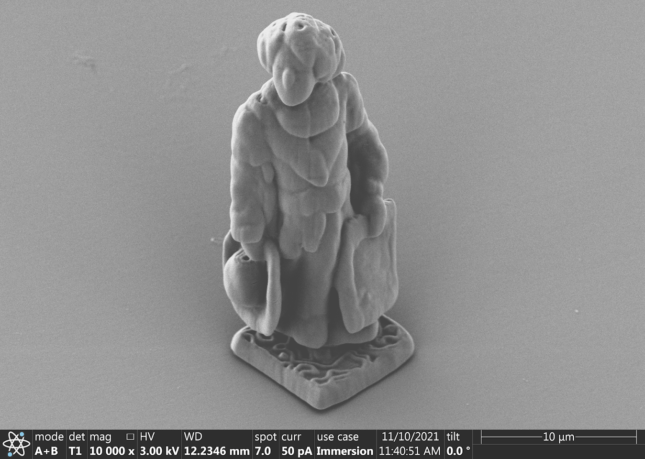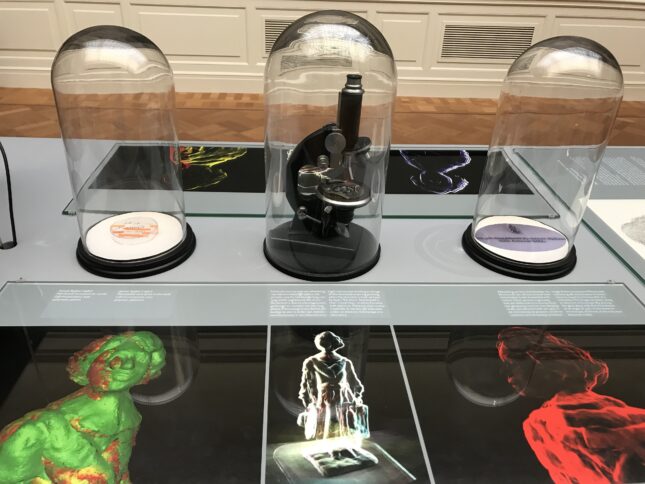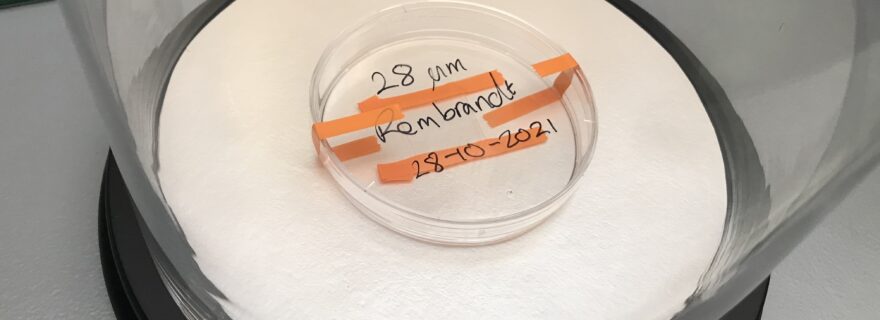416 candles on the cake
Friday the 15th of July was the 416th birthday of Rembrandt van Rijn. Because this birthday was during the year of Leiden City of Science it was celebrated in a special way; with the smallest artwork in the world.
This miniscule piece of art was made by sculptor Jeroen Spijker, in association with Daniela Kraft and Rachel Doherty from our own faculty. It is a very tiny sculpture of Rembrandt, measuring only 28 micrometers in length. Too small to see with the naked eye, it can only be visualized with an electron microscope. In the museum, the sculpture is hidden in a petri dish, positioned under a bell jar. Next to it are two other bell jars with a microscope and a picture of the figure. A short movie tells you how the sculpture was made.

So how was it made?
The sculpture is a smaller version of an existing statue, made by Jeroen Spijker. That sculpture was scanned and reconstructed as small as possible with a 3D-printer. If the figure was even smaller, it would have been too disfigured to be recognizable as the same sculpture. It was made from a special polymer, finished off with a thin layer of platina.
The physicists that worked on the project weren’t randomly selected: in 2020, “Kraft Lab”, the research team that both scientists were apart of, made a boat of 30 micrometer. A little bit taller than the Rembrandt, but the boat could actually stay afloat!
Apart from being a unique way to celebrate the birthday of this painter from Leiden, this sculpture is also important to science. The micro-Rembrandt is a great test for the 3D-printer to test its limits: what’s the smallest we can print?


Birthday party
Multiple activities were organised in honour of Rembrandt’s birthday, like a children’s lecture, a drawing workshop and a scavenger hunt for children. Jeroen, the maker of the sculpture, was also present to answer questions. The most popular however was the ice cream cart, where each visitor could get a free ice cream on their way out.
The terrace and the benches on the canals were filled with people from all ages, enjoying their ice cream and talking about their day at the museum.
The sculpture was visible in the Rembrandtzaal of Museum Lakenhal until the 31st of July, where a couple of his paintings are displayed. Even though the sculpture itself wasn’t visible, the idea that it was really standing there made it worth to take a look at it.






0 Comments
Add a comment